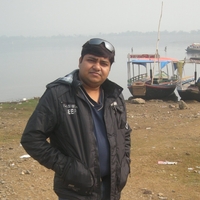
Rochadi Tawaf
Related Authors
Jude (Judith) Capper
Harper Adams University
David Seamon
Kansas State University
Armando Marques-Guedes
UNL - New University of Lisbon
mahamed abdi abdilahi
Ankara University
Listanti Marlina
University of Padjadjaran (UNPAD)
Luis Moreno
CSIC (Consejo Superior de Investigaciones Científicas-Spanish National Research Council)
Mehmet Saltuk ARIKAN
Firat University
rochadi tawaf
University of Padjadjaran (UNPAD)
Tribeni Prasad Banerjee
West Bengal University Of Technology
Shivaji Chaudhry
Indira Gandhi National Tribal University, Amarkantak , India
InterestsView All (11)










Uploads
Papers by Rochadi Tawaf
welfare in West Java. This study was conducted in two phases, the first year study in 2013 was to investigate slaughterhouses under governmental services and the second year study in 2014 was to examine the best slaughterhouses based on the results of research in the first year, to establish competitive slaughterhouse management. A survey method in 13 cities or regencies in West Java was used in the first year while an explorative study in the two selected slaughterhouses was used in the second year. The results showed that (1) most of the slaughterhouses were not and less feasible. This was due to some technical requirements and the procedures that were inconsistent with regulation from the Indonesian Minister of Agriculture and Indonesian national standard. There were only two feasible slaughterhouses with more than 80% scores but still need infrastructure and management improvement to be more competitive. (2) Slaughterhouse competitive management
model respects to animal welfare and produces 'hot meat' products which was under the Good Slaughtering Practices by slaughtering cattle with or without stunning procedures.
Key words: Slaughterhouse management, competitive, standardization, and Animal welfare
welfare in West Java. This study was conducted in two phases, the first year study in 2013 was to investigate slaughterhouses under governmental services and the second year study in 2014 was to examine the best slaughterhouses based on the results of research in the first year, to establish competitive slaughterhouse management. A survey method in 13 cities or regencies in West Java was used in the first year while an explorative study in the two selected slaughterhouses was used in the second year. The results showed that (1) most of the slaughterhouses were not and less feasible. This was due to some technical requirements and the procedures that were inconsistent with regulation from the Indonesian Minister of Agriculture and Indonesian national standard. There were only two feasible slaughterhouses with more than 80% scores but still need infrastructure and management improvement to be more competitive. (2) Slaughterhouse competitive management
model respects to animal welfare and produces 'hot meat' products which was under the Good Slaughtering Practices by slaughtering cattle with or without stunning procedures.
Key words: Slaughterhouse management, competitive, standardization, and Animal welfare